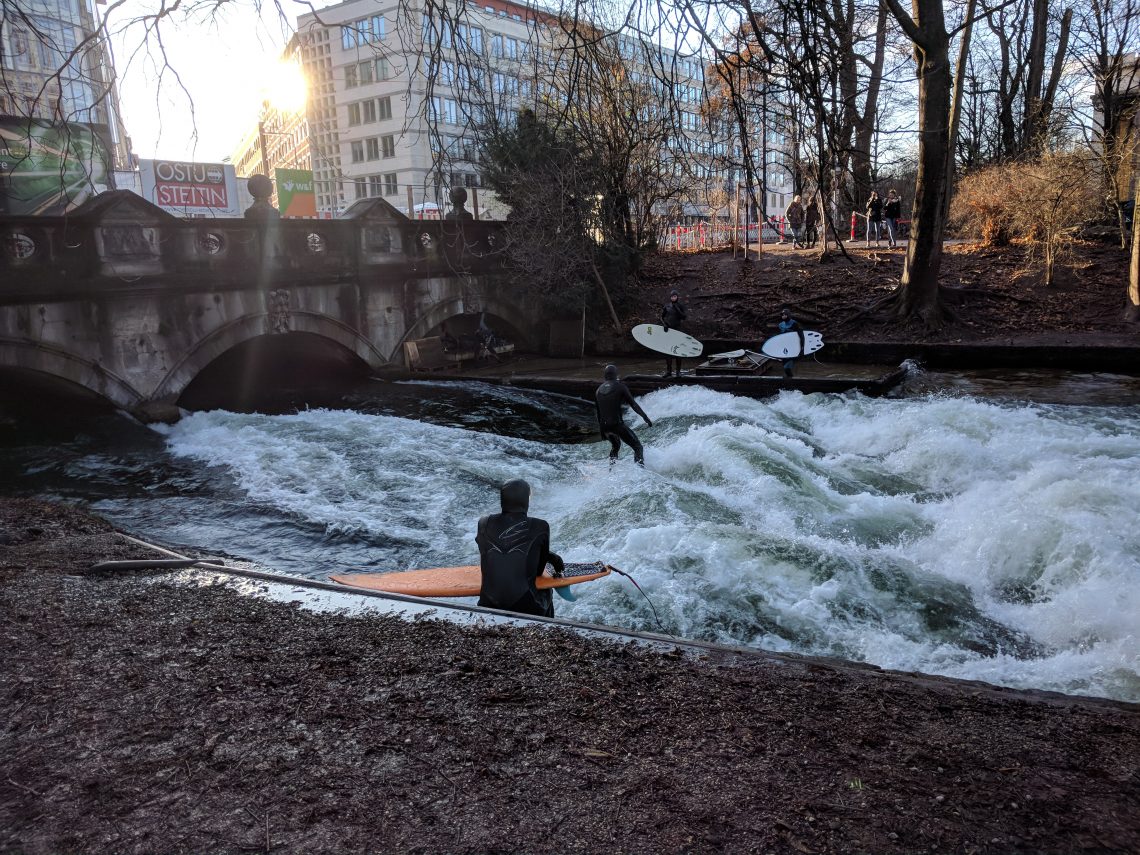The deep ocean is always in motion, with its circulation driven by water density. The densest waters are formed at the surface in the North Atlantic and on the continental shelves around Antarctica. These cold, salty waters then sink and flow into all the ocean basins. For the most part, the deep ocean temperature varies extremely slowly. However, far below the tropical South Pacific is a location where vigorous mixing warms the bottom water over a few kilometers. This is part of the Samoan Passage, an approximately 100 kilometer wide gap in the underwater mountain range that blocks the flow of the deepest and densest water into the North Pacific. Over half the bottom water flowing in the North Pacific goes through the Samoan Passage — about six million cubic meters per second.
A process known as a hydraulically controlled flow is responsible for the enhanced warming of the bottom water. A common example of hydraulic flow is the pattern under a kitchen faucet. Close to the faucet there is a thin layer of faster moving water and then further from the faucet it suddenly jumps to become a thicker (and slower moving) layer. Hydraulic jumps can also be seen in rivers, particular downstream of weirs.

The situation in the Samoan Passage is a bit different, in that rather than occurring at the air-water boundary the hydraulic control occurs about four kilometers under the ocean surface. A ‘river’ of dense bottom water, up to 800 meters thick, flows underneath a warmer layer. As the bottom water flows over topographic sills, the layer thins and accelerates and becomes hydraulically controlled, which causes the bottom layer to entrain water from the warmer layer above resulting in a locally unstable water column (denser water over lighter water). Collapsing of these density overturns results in mixing of the bottom layer and overlying water. The flow in the Samoan Passage is further complicated by multiple sills which can block and reflect the mixing water.
Analyzing data collected during a National Science Foundation experiment to study the deep flow in the Samoan Passage raised a number of questions about how the stratified hydraulically controlled flow varied over short horizontal distances. Although the scope of our observations are largely unprecedented in the deep ocean, they do not have the resolution needed to examine the hydraulic flow over short distances.
Above: Density in a section of the domain between the two Gaussian sills. Reds represent denser water and blue lighter water. At the left hand end the upstream condition of a sharp interface between the bottom layer and the overlying water can be seen.
The Schmidt Ocean Institute High Performance Computing facility (SOI-HPC) was used to perform a simulation of a density stratified internal hydraulically controlled flow. Although the simulation was based on the section of the Samoan Passage will the largest mixing, it was idealized. The model domain was 2-dimensional (vertical and along-channel), and consisted of two Gaussian shaped sills. Upstream of the first sill the flow consisted of a stationary weakly stratified layer overlying a moving dense layer. By the downstream edge of the domain the dense layer has been completely mixed away. One of the reasons for using the SOI-HPC is that the simulation needed to be able to resolve the largest scales associated with the density turns down to the scales where the energy is dissipated into heat — which for our set up meant greater than 150 meters down to 3 centimeters. Even with an adaptive model, finer grid resolution where there are strong gradients and coarser elsewhere, this is computationally expensive.
Above: Section of the domain between the two Gaussian sills. The colors are speed with red being towards the right (downstream) and blue being towards the left. The black lines show seven density contours.
Although the analysis of the simulation is just beginning, the results are fascinating, with small scale features and sharp gradients propagating both down and upstream.
